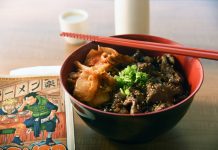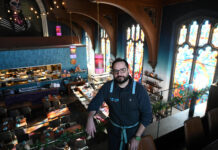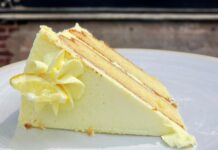“If we leave the door open to there being a marketing push for non-alcoholic beverages among kids, could that then lead to increased alcohol use among this generation? We don’t want to wait to find out if that’s going to happen.”
— Molly Bowdring of the Stanford Prevention Research Center
All the way back in January, I devoted a “Hip Hops” column to the proposition that when it comes to “NA” beers, alcohol makes our hops-flavored barley beverages safer, not the other way around. At the risk of over-simplification, the act of boiling water to brew beer kills germs, and so does the alcohol created by fermentation.
Here’s the refresher course.
Hip Hops: About non-alcoholic beers, and what they’re missing (or not)
Obviously none of this addresses societal (varying slightly from “purely scientific”) concerns about children ingesting beverage alcohol. Most of us agree there should be a legal drinking age, although we quibble about the specifics. But this drinking age by definition applies to alcoholic beverages.
What about non-alcoholic drinks that mimic the character of “the real thing” for the benefit of adults? An article at NPR provides an overview of yet another discussion best undertaken only after defining one’s terms.
ID please. Should kids be able to buy nonalcoholic beer, wine and mocktails?, by Pien Huang (NPR)
Darryl Collins owns a zero-proof bottle shop called Hopscotch in Baltimore, Md., selling over 200 options of nonalcoholic spirits, beer, wine and canned cocktails.
He opened the shop in August 2023 to get in on the booming market for adult nonalcoholic beverages. These are drinks with less than 0.5% alcohol by volume (ABV), marketed towards adults who want to cut back on drinking, avoid hangovers, or prevent other ill health effects from alcohol.
Credit Collins for astutely mining an unexplored niche market. That’s chutzpah worthy of commendation. In order to sidestep potential controversy, he has set his own age limit, and “cards” his customers, precisely because the state of Maryland offers no guidelines — and for operators, parameters are what protect you from arbitrary prosecution.
Now, some health researchers are calling for clear, consistent age limits for non-alcoholic beers, wines and liquors, likening them to candy cigarettes. “I think there is a risk that these could be an entry product for alcohol use,” says Molly Bowdring, a clinical psychologist and researcher.
I’m reminded that when my European travels began almost 40 years ago, certain locales in Belgium served table beer (1% – 2% abv) to children in school, the authorities having correctly rejected the olfactory atrocity of milk.
I believe that drinking milk is an aesthetic and culinary outrage on a par with Coors Light and McDonald’s. Drinking milk as a conspiracy foisted on us by the multinational dairy lobby.
Apart from all that, I dislike milk intensely, though you can make it into something else and I’m all in. I adore cheese, cream-based sauces, dairy-laden desserts and Milk Stout; obviously, I can tolerate lactose, but drink it from a glass? Yuck.
Not that I’m suggesting the insertion of NA IPA into the curriculum, mind you.
Today’s non-alcoholic spirits, beer, wine and canned cocktails taste more like the genuine article than ever before, and in my opinion, this is why the “entry product” discussion is taking place. There’s no comparison with candy cigarettes.
Being an older man without children who unrepentantly drinks alcoholic beverages, albeit at a level of moderation that surprises even me, I’m content to let the rest of you decide whether kids should be exposed to beverages that suggest alcohol while containing none.
It’s the perfect bar conversation for America at the present time, don’t you think?
Photo credit: wecard.org.
—
“Edibles & Potables” is Food & Dining Magazine’s Sunday slot for news and views that range beyond our customary metropolitan Louisville coverage area, as intended to be food (and drink) for thought. Previously …
Edibles & Potables: My obligatory annual Francesinha tout, and other world sandwiches























